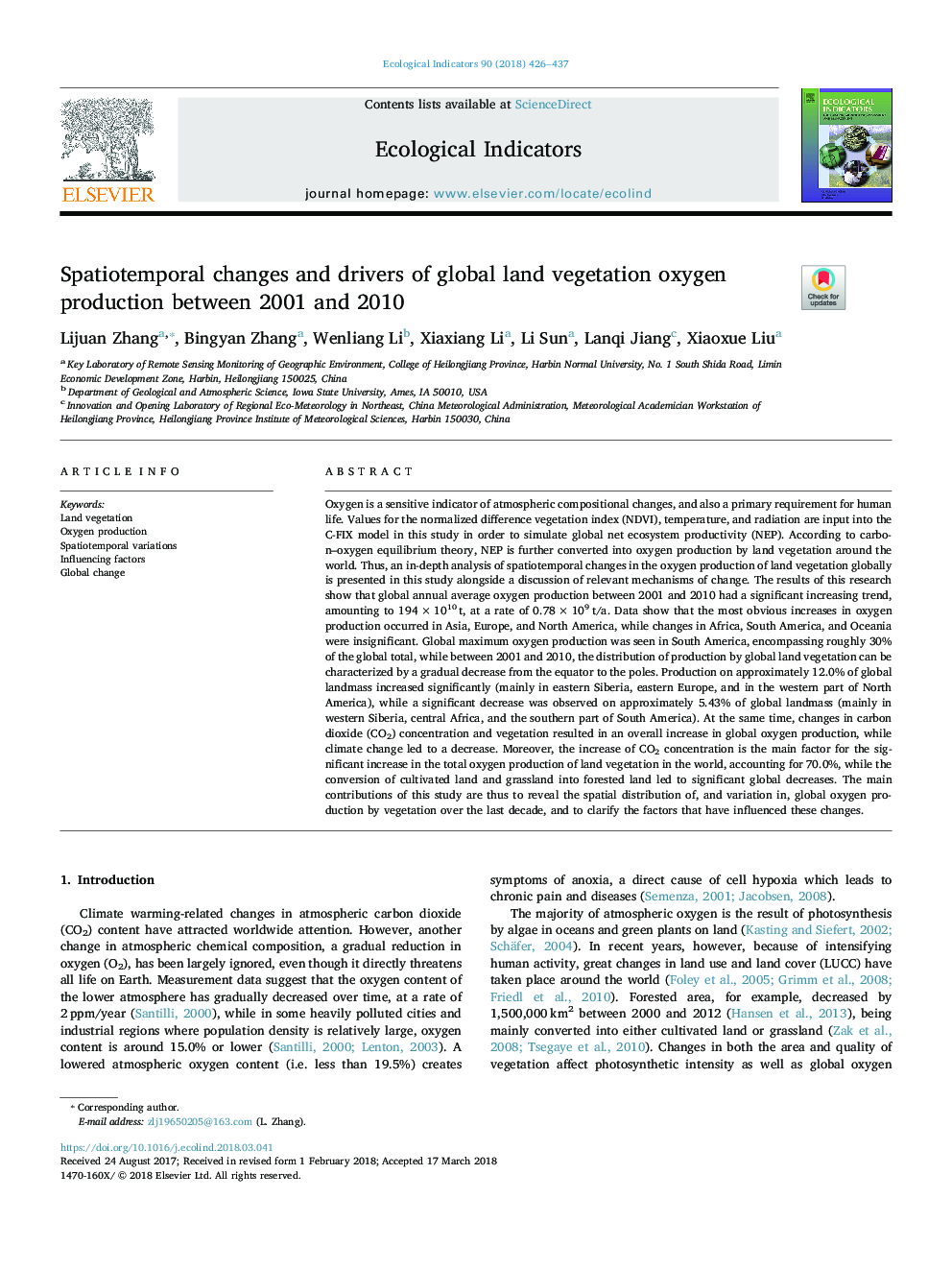| کد مقاله | کد نشریه | سال انتشار | مقاله انگلیسی | نسخه تمام متن |
|---|---|---|---|---|
| 8845442 | 1617112 | 2018 | 12 صفحه PDF | دانلود رایگان |
عنوان انگلیسی مقاله ISI
Spatiotemporal changes and drivers of global land vegetation oxygen production between 2001 and 2010
دانلود مقاله + سفارش ترجمه
دانلود مقاله ISI انگلیسی
رایگان برای ایرانیان
کلمات کلیدی
موضوعات مرتبط
علوم زیستی و بیوفناوری
علوم کشاورزی و بیولوژیک
بوم شناسی، تکامل، رفتار و سامانه شناسی
پیش نمایش صفحه اول مقاله

چکیده انگلیسی
Oxygen is a sensitive indicator of atmospheric compositional changes, and also a primary requirement for human life. Values for the normalized difference vegetation index (NDVI), temperature, and radiation are input into the C-FIX model in this study in order to simulate global net ecosystem productivity (NEP). According to carbon-oxygen equilibrium theory, NEP is further converted into oxygen production by land vegetation around the world. Thus, an in-depth analysis of spatiotemporal changes in the oxygen production of land vegetation globally is presented in this study alongside a discussion of relevant mechanisms of change. The results of this research show that global annual average oxygen production between 2001 and 2010 had a significant increasing trend, amounting to 194â¯Ãâ¯1010â¯t, at a rate of 0.78â¯Ãâ¯109â¯t/a. Data show that the most obvious increases in oxygen production occurred in Asia, Europe, and North America, while changes in Africa, South America, and Oceania were insignificant. Global maximum oxygen production was seen in South America, encompassing roughly 30% of the global total, while between 2001 and 2010, the distribution of production by global land vegetation can be characterized by a gradual decrease from the equator to the poles. Production on approximately 12.0% of global landmass increased significantly (mainly in eastern Siberia, eastern Europe, and in the western part of North America), while a significant decrease was observed on approximately 5.43% of global landmass (mainly in western Siberia, central Africa, and the southern part of South America). At the same time, changes in carbon dioxide (CO2) concentration and vegetation resulted in an overall increase in global oxygen production, while climate change led to a decrease. Moreover, the increase of CO2 concentration is the main factor for the significant increase in the total oxygen production of land vegetation in the world, accounting for 70.0%, while the conversion of cultivated land and grassland into forested land led to significant global decreases. The main contributions of this study are thus to reveal the spatial distribution of, and variation in, global oxygen production by vegetation over the last decade, and to clarify the factors that have influenced these changes.
ناشر
Database: Elsevier - ScienceDirect (ساینس دایرکت)
Journal: Ecological Indicators - Volume 90, July 2018, Pages 426-437
Journal: Ecological Indicators - Volume 90, July 2018, Pages 426-437
نویسندگان
Lijuan Zhang, Bingyan Zhang, Wenliang Li, Xiaxiang Li, Li Sun, Lanqi Jiang, Xiaoxue Liu,